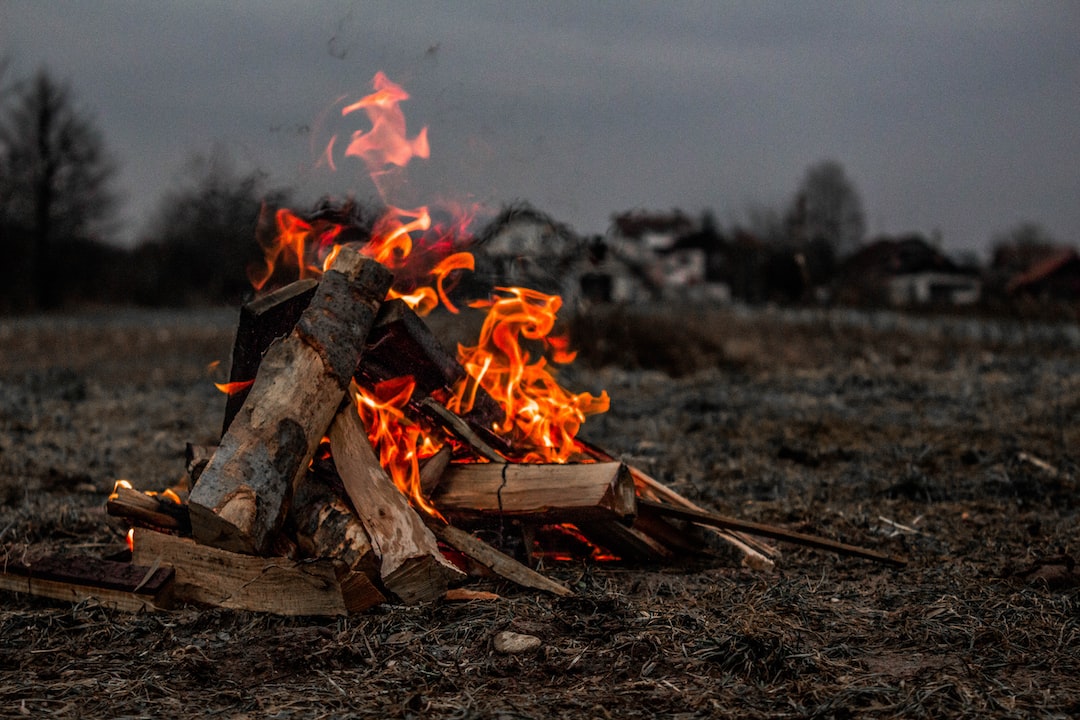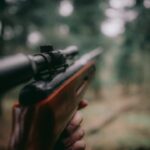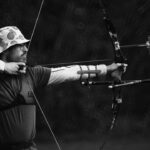Starting a campfire can be one of the most satisfying experiences for hunters, but there is more to it than just striking up a match.
When done correctly, you’ll need the right kind of firewood and an effective campfire starter that will help ensure your flames are long-lasting.
In this article we cover everything from safety tips and how to build a fire ring, to finding and preparing firewood for your next camping trip or hunting excursion; as well as learning which brands offer the best campfire starters on the market today.
So if you’re looking for answers about building safe fires in wet conditions or windy weather – read on.
Here’s a helpful video on how to start a fire even when it’s wet:
Campfire Safety
Campfire safety is an important part of enjoying the outdoors.
When building a fire ring, it’s essential to follow local regulations and laws regarding campfires. It’s also important to choose a safe location for your fire ring away from flammable materials like dry grass or brush.
Make sure you have enough space around the fire pit so that sparks won’t fly onto nearby objects and cause a hazard. Additionally, be sure to build your fire in an area with good ventilation so smoke doesn’t become trapped in the area.
When extinguishing a campfire, make sure all embers are completely out before leaving the site. The best way to do this is by pouring water over the entire area until there are no more visible signs of heat or smoke coming from the ashes.
You can also use dirt or sand to smother any remaining flames if necessary but be careful not to spread burning embers when doing this as they could start another fire elsewhere on your property or someone else’s land.
Avoiding injury and accidents while using a campfire is essential for everyone’s safety and enjoyment of outdoor activities such as camping trips, hunting expeditions, etc.
Always keep children at least three feet away from any open flame and never leave them unattended near a campfire even for just a few minutes.
Additionally, wear protective clothing such as long sleeves and pants when tending fires since sparks can easily jump up onto exposed skin causing burns or other injuries.
Finally, never throw combustible materials into an active flame; always wait until it has died down before adding fuel like wood chips or logs into your campfire pit.
It’s important to remember that campfire safety is paramount, so take the time to review these tips and build a safe fire ring before you start your campfire. Now let’s learn how to construct one step-by-step.
How to Build a Fire Ring
Building a fire ring is an important part of any outdoor camping or hunting trip. It not only provides a safe place to build and maintain your campfire, but it also helps protect the environment from potential damage caused by an open flame.
Before you begin building your fire ring, make sure that you have all the necessary materials on hand and that you are in compliance with local regulations and laws.
Gathering Materials for the Fire Ring:
The first step in building a fire ring is gathering all of the necessary materials.
You will need rocks, bricks, or other non-flammable material to form the outer wall of your fire ring; these can be found at most home improvement stores or online retailers.
Additionally, you will need some kindling such as dry twigs or small pieces of wood to help get your fire started quickly and easily.
Finally, make sure that you have enough fuel (wood) on hand to keep your campfire burning throughout the night if needed.
Building the Fire Ring Step by Step:
Once you have gathered all of your materials, it’s time to start constructing your fire ring.
Begin by arranging stones around where you want to build your campfire so they form a circular shape – this will act as an outer wall for containing any sparks from flying outwards during use.
Then fill in any gaps between each stone with smaller pieces like gravel or sand until there are no large spaces left between them; this will help ensure that heat does not escape through cracks when using larger logs later on down the line.
Lastly, create a depression within this circle which should be about 6 inches deep – this is where we’ll add our kindling later on.
After building up our fire pit structure, it is important to take care of it properly so that we can continue using it safely over time without having to rebuild every single time we go camping.
Make sure that when adding new fuel (wood) into our pit each night before going bedding down for sleep, we also check around its perimeter for any loose rocks/bricks/etc. that may have been disturbed due to windy conditions while away from camp earlier in the day.
If anything looks off, just re-secure those items back into their original positions before retiring inside the tent or RV etc.
Additionally, try cleaning out ashes after each use; doing so prevents buildup and makes future fires easier to light and more enjoyable overall experience wise.
Once you have completed your fire ring, it’s time to find the best campfire starter for your needs. With so many different brands and types of campfire starters on the market, it can be difficult to decide which one is right for you.
Read on to learn more about comparing popular brands and choosing the perfect campfire starter for your outdoor adventure.
Best Campfire Starter Brands
When it comes to starting a campfire, having the right kind of fire starter is essential.
There are many different types of campfire starters available on the market, from traditional wood shavings and newspaper to more modern options like liquid fuel or electric starters.
Each type has its own advantages and disadvantages, so it’s important to consider your needs before making a purchase.
Types of Campfire Starters Available on the Market:
When selecting a campfire starter, you have several options to choose from.
Traditional wood shavings and newspaper can be used as tinder for lighting fires quickly and easily; however, they don’t last very long once lit.
Liquid fuel starters a.k.a lighter fluid are popular because they produce an intense flame that lasts longer than other methods; however, they can be dangerous if not handled properly.
Electric starters use electricity to ignite the fire with minimal effort; however, these require access to an electrical outlet or generator in order for them to work properly.
Comparing Popular Brands of Campfire Starters:
When comparing brands of campfire starters, there are several factors that should be taken into consideration such as ease-of-use, cost effectiveness and safety features.
For example, some brands offer pre-measured packets that make starting a fire easier while others provide larger containers which may save money over time but require more effort when using them each time you want to start a fire.
Additionally some brands feature childproof lids or spark guards which help prevent accidental ignition or burns due to sparks flying out unexpectedly during use.
When it comes to starting a campfire, having the right kind of fire starter is essential. There are many different types of campfire starters available on the market today, ranging from traditional wood shavings and wax cubes to more modern options like electric lighters and propane torches.
Each type has its own advantages and disadvantages, so it’s important to choose one that best suits your needs, like when shopping for a gun safe or a hunting sock.
When it comes to starting a campfire, having the right kind of fire starter is essential.
There are various types of campfire starters available on the market today, such as wood shavings, wax cubes, electric lighters, propane torches, liquid fuel stoves and tinder boxes.
Each type has its own advantages and disadvantages; for instance wood shavings can be difficult to light in wet conditions but offer easy use while wax cubes provide an easier way to start a fire but can be expensive.
Electric lighters require batteries yet offer reliable ignition even in wet weather whereas propane torches create intense heat for quick lighting. Liquid fuel stoves allow you to control the intensity of your flame with precision and tinder boxes contain all necessary materials for starting a fire quickly and easily.
When comparing brands of campfire starters, there are several factors to consider such as price point, ease-of-use/reliability/durability/safety features (for example some models have built-in spark arrestors), convenience (some models come with carrying cases) and customer reviews.
Popular options include:
- UCO Stormproof Matches which feature waterproof matches that burn up to 15 seconds even when submerged in water;
- Zippo Emergency Fire Starter Kit which includes flint wheel technology for reliable ignition even in wet conditions;
- Solo Stove’s Tinderbox containing everything needed for easy lighting including cotton balls soaked in petroleum jelly plus other items like char cloths and twine bundles wrapped around sticks for extra fuel sources if needed;
- Coleman Propane Torch creating intense heat ideal for fast lighting without any smoke or sparks flying off during ignition making it safer than other methods used outdoors near combustible materials like dry leaves or grasses etc.;
- Bic Electric Lighter offering battery powered reliability at an affordable price point perfect for camping trips where electricity may not always be available.
Once you have determined the best campfire starter brand for your needs, it is important to understand how to use that product in wet conditions. The next heading will discuss how to start a fire when it is wet and what methods can be used to ensure a successful burn.
How to Start a Fire When It Is Wet
Starting a fire in wet weather can be tricky, but it’s not impossible. The key is to prepare ahead of time and have the right materials on hand.
Gathering dry materials in wet conditions is essential for starting a successful campfire. Look for dry leaves, bark, twigs, or other small pieces of wood that are relatively free from moisture.
If you’re unable to find any dry material, try using an old newspaper or cardboard as kindling – just make sure they don’t contain any chemicals or dyes that could produce toxic fumes when burned.
Once you have your kindling and other materials ready to go, it’s time to start building your fire ring.
Start by making a pile of tinder (small sticks) at the center of your fire pit and then add larger pieces of wood around it in concentric circles until you reach the desired size and shape for your fire ring.
Make sure there is enough space between each piece so air can circulate freely throughout the structure – this will help ensure even burning once you light the fire.
To get things going quickly without having to use matches or lighters every time, consider investing in some quality campfire starters such as wax cubes or gel fuel cans which provide quick ignition with minimal effort required on your part.
These products come in various sizes depending on how large your campfire needs to be; just remember that if using these items always read all safety instructions before lighting them up.
When starting a fire under wet conditions it is important not only to create an efficient burn pattern but also to keep an eye out for potential hazards like smoke inhalation due to dampness trapping smoke near ground level.
Therefore, make sure everyone stays well away from direct contact with flames while enjoying their warm fireside experience.
Finally, when extinguishing after use never leave smoldering embers unattended; instead cover them completely with dirt or sand until they are fully extinguished before leaving the site altogether.
Once you have gathered your dry materials, use kindling and other methods to start a fire in wet weather, and make sure it burns evenly. With the right preparation, finding and preparing firewood for your campfire can be just as easy – if not easier.
Finding and Preparing Firewood for Your Campfire
When it comes to campfires, having the right kind of firewood is essential. The best way to ensure that you have a safe and enjoyable experience is by finding and preparing your firewood properly.
When planning your hunt, be aware of the firewood cutting laws in the area and plan accordingly.
Identifying Safe Sources of Firewood:
Before collecting any wood for your campfire, make sure you are aware of local regulations regarding gathering firewood from public lands or forests. It’s also important to be mindful of endangered species in the area when looking for fuel sources as some trees may be protected.
When possible, try to collect deadfall branches instead of cutting down live trees or shrubs. Deadfall branches are easier to break up into smaller pieces and burn more efficiently than green wood which can smolder rather than ignite quickly enough for a successful campfire.
Preparing and Storing Your Firewood Properly:
Once you have collected your wood, it’s important to store it correctly so that it will remain dry until needed. If possible, keep the wood off the ground in an elevated position such as on top of rocks or logs away from direct sunlight and rain exposure if at all possible.
This will help prevent mold growth while allowing air circulation around each piece which will help speed up drying time before use in a campfire setting.
FAQs in Relation to Campfire Starter
What is a good campfire starter?
A good campfire starter is something that will easily ignite and burn hot enough to get your fire going. The best options are usually dry, fibrous materials such as wood shavings, paper, or cardboard.
You can also use wax-coated fire starters like Fatwood or Firestarters which are specially designed for this purpose. For added randomness and perplexity, you could even try using cotton balls soaked in petroleum jelly as a makeshift firestarter.
What is the best natural fire starter?
The best natural fire starter is a combination of tinder, kindling, and fuel.
Tinder is the smallest material that will catch a spark or flame quickly; it can be dry grasses, leaves, bark shavings, or even lint from your clothes. Kindling are small sticks and twigs that help to keep the fire going once lit.
Fuel consists of larger logs and branches that provide sustained heat for an extended period of time. By combining these three elements in the right proportions you can create an efficient and reliable fire starter with minimal effort.
What is a simple homemade fire starter?
A simple homemade fire starter can be made using cotton balls, petroleum jelly, and a small container such as an empty film canister or pill bottle.
Start by filling the container with the cotton balls and then coating them in petroleum jelly. This will help to create a slow burning fuel that will easily ignite when exposed to flame.
To use, simply light one of the coated cotton balls and it should burn long enough for you to get your kindling lit. With this easy-to-make fire starter, you’ll be able to start a campfire quickly no matter where you are.
Can you start a campfire with rubbing alcohol?
No, you cannot start a campfire with rubbing alcohol. Rubbing alcohol is not an effective fuel source for starting a fire because it does not burn hot enough or long enough to ignite tinder and kindling.
Additionally, the fumes produced by burning rubbing alcohol can be toxic and flammable when exposed to open flame.
For best results, use dry wood shavings, paper products such as newspaper or cardboard, or other combustible materials like charcoal briquettes to start your campfire safely and effectively.
Conclusion
Campfires are a great way to enjoy the outdoors and make memories with friends and family. However, it is important to remember safety first when building your campfire.
Make sure you have the right tools such as a good quality campfire starter, fire ring, kindling, and wood so that you can start your fire safely. With these tips in mind, you’ll be able to build a safe and enjoyable campfire for everyone.



